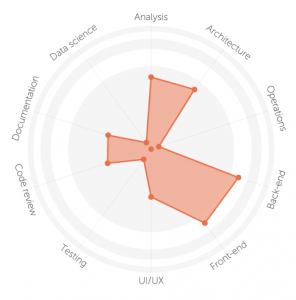If you read Monday’s post on Crappy Employment Brands, I told you I would answer the most asked question in HR and Talent Acquisition of all time. It’s goes with the title to this post, and almost anytime I speak I get at least one person who will ask me this question during the Q&A:
What ATS (Applicant Tracking System) do you use?
The question is basically irrelevant unless the person asking me works in the exact same industry and business that I work in (IT and Technical contract staffing). Which they usually don’t. Usually, it’s a corporate HR or Talent Pro. My ATS software is designed for something completely different for what they want.
But, more importantly, the question is asked because so many people believe that the ATS is the secret sauce to successful recruiting in corporate talent acquisition. It’s not. The secret sauce to great hiring is only expedited by your recruitment technology. If you suck at hiring, the best ATS on the market will only make you suck at hiring much faster!
The best ATS systems will give you great functionality that includes CRM, recruitment marketing, recruitment automation, talent communities, great sourcing tools, assessment/screening technology and interview technology baked into the product, onboarding, etc. The worse ATS systems give you a basic product that will allow you to accept applicants online and process them through some sort of hiring process.
There are literally hundreds, if not thousands, of ATS systems on the market. Most people will demo three or less. There is an ATS that is right for you, but you have to be willing to look at a lot of them.
So, what ATS should you select for you company? I’ll give you some tips:
1. Select an ATS you can afford. That sounds obvious, but most HR and Talent pros over-buy on their ATS, for the amount of hiring they do. If you only hire a hundred people a year, you don’t need an ATS that costs $100K per year to own/rent. You can great ATS software for a few thousand dollars per year.
2. Select an ATS that has the functionality your business needs. Again, obvious, but missed by most new buyers. If you don’t need talent communities, paying for talent communities is a waste. If you organization won’t use video interviewing, why are you buying it baked into your ATS. If you definitely need a pre-employment assessments baked in, you can find a system that will meet your needs. Don’t settle.
3. Select an ATS that most closely fits your hiring process. This sounds stupid, but the majority of ATS failures have nothing to do with the ATS and everything to do with you not willing to change your process. You take the ATS and force them to do all sorts of changes to fit your broken process, and in turn break their proven best practice process. In the end, you fail and blame the ATS. Save yourself the headache and find an ATS that does the flow exactly how you want it. Some are very configurable and will allow you to change and keep changing your process. Some aren’t configurable at all.
4. Select an ATS that you feel you could start using immediately after the demo. ATS systems should be very easy to use. If you feel overwhelmed by the demo, it’s not the right system for you.
5. Select an ATS you can grow into. If you aren’t going to grow, you don’t need to worry about this, so don’t get talked into it. Most ATS systems are designed for a certain level of hiring. The best vendors will be honest and tell you, the worst will tell you what you want to hear. Find out who their clients are that are your same size and demand to talk to them. If they don’t give you that access, run. The good vendors will bend over backwards to get you to talk to their current clients.
If you don’t have an ATS, you should be fired. There are literally four or five major players in ATS technology that will give you a one user system for FREE (and only a few hundred dollars to add other users)! Of course, you get what you pay for, but you need to start somewhere! No company that is hiring should not have an ATS. The prices range from Free to millions of dollars.
What ATS systems do I like? There are bunch: Workable, Jobvite, Bullhorn, Greenhouse, Taleo, Newton, The Resumator, Silkroad, iCims, SuccessFactors and Gr8People, in no specific order.
Here’s the funny thing. Some of you use one of these from above and hate them! That’s ATS technology. Most people think everyone elses ATS is better than what they’re using. The reality is, most do about the same thing – post jobs, accept resumes, some stuff in between, BAM you’re hired.

